At the end of October, members of our Rapidan Society spent a weekend in Shenandoah, engaging with our park colleagues and partners and getting a behind-the-scenes look at the work going on in the park. One of those partners was Appalachian Conservation Corps (ACC), who brought in one of their Saw Crews to chat with donors about their experiences clearing overlooks funded by the Adopt-an-Overlook program. Below is both a summary and a full (lightly abridged) transcript of that conversation:
Speakers
– Anna Patchias, SNPT Director of Leadership Giving (she/her)
– Robbie Pullen, ACC Crew Program Director (he/him)
– SNPT Donors & Staff: Rick, Pat, Jillian, Patti, Cathy, Ember
– Saw Crew Members:
- Aaron Morrell (he/him)
- Anella Cousin (she/they)
- Paavo Mueller (he/they)
- Sasha Dunford (she/they)
- Gray Sallee (they/them)
- Max McLaughlan (he/him)
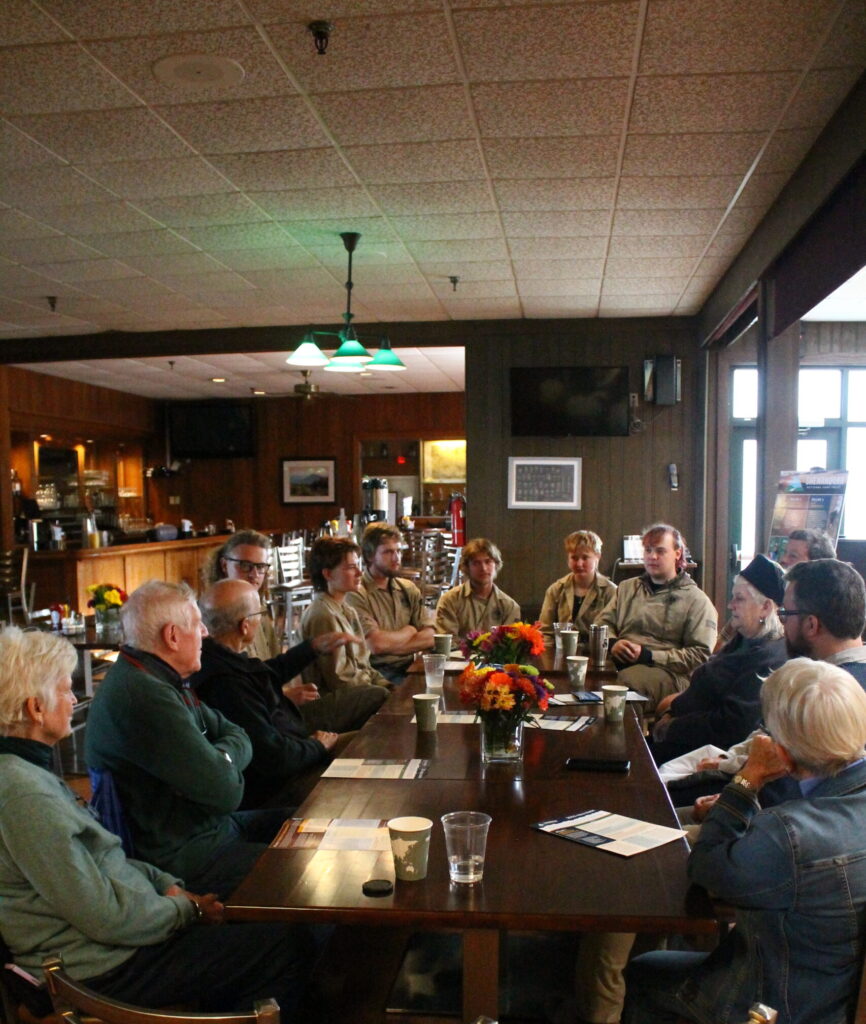
TL;DR – Conversation Summary & Highlights
Introduction by Robbie:
“I’m the program director with the Appalachian Conservation Corps (ACC), based in Mount Crawford, Virginia. Our partnership with the Trust supports projects like the Shenandoah Youth Corps and the innovative Trailblazers program. Today, we’re featuring one of our adult saw crews clearing overlooks in Shenandoah National Park, ensuring visitors can enjoy panoramic views.”
Discussion Highlights:
Seasonal Work and Crew Lifestyle:
Robbie explained that most of the crew members are seasonal employees. ACC’s season runs from mid-February to Thanksgiving, though some crews work longer if housing is available. Crews camp during their projects, fostering a close-knit environment. Aaron, the staff crew leader, oversees scheduling and work quality, with other members serving as AmeriCorps volunteers who receive stipends and educational awards.
Meet the Crew:
– Paavo shared, “I’m from Chicago, and I came here for the scenery and to start my conservation career.”
– Anella, originally from Minnesota, found ACC after moving for a job with the Girl Scouts.
– Aaron, from central Pennsylvania, transitioned from working as a diesel mechanic to leading crews at ACC.
– Max, a lifelong visitor of Shenandoah, noted, “I’ve always loved this park, and now, I’m contributing to it.”
– Gray, who grew up in Blacksburg, Virginia, said, “I joined ACC after developing a passion for native plants and conservation while working at a nursery.”
– Sasha, an environmental studies graduate from South Carolina, added, “ACC has been an invaluable way to gain hands-on experience and make connections in conservation.”
Training and Tools:
The crew undergoes extensive training, including a nine-day chainsaw certification course. Safety is paramount, with all members trained in first aid and compliance with OSHA regulations. Robbie mentioned, “Our Sawyers start with basic certifications and can progress to more complex ratings with experience.”
Challenges and Rewards:
Crew members described the physical and mental demands of the job:
– Paavo highlighted the stress and exhilaration of using chainsaws on steep slopes but said, “The view and sense of purpose make it worth it.”
– Anella appreciated the camaraderie: “We spend nine days at a time together, building strong bonds.”
– Gray noted the unique access to untouched ecosystems and the thrill of seeing native plants thrive.
– Sasha summed up the work’s dual impact: “It’s tough and dangerous, but rewarding because I’m contributing to the environment and pushing myself.”
Career Paths:
Many crew members shared how their roles at ACC have shaped or reinforced their career aspirations:
– Paavo hopes to pursue a bachelor’s degree in forestry or a related field.
– Anella is considering arborist work to blend hands-on skills with a more stable schedule.
– Gray expressed interest in working with the National Park Service or returning to school to further their conservation education.
– Sasha dreams of influencing sustainable management practices in public lands.
Robbie’s Insight:
“ACC alumni frequently find work in national parks, supported by partnerships like the one with Shenandoah National Park Trust. Hiring managers often prefer our graduates because of their dedication and hands-on experience.”
Conclusion by Anna:
“I’m continually inspired by your stories and commitment. You’re shaping the future of conservation and leaving a lasting impact on Shenandoah and beyond.”
Transcript (Lightly Abridged)
Robbie: Hi, I’m the crew program director with the Appalachian Conservation Corps, and we’re based down in Mount Crawford, Virginia, just outside of Harrisonburg. We have such a strong partnership with the Trust, and it’s such an appreciated partnership, supporting the Shenandoah Youth Corps up here, helping with new initiatives like the Trailblazers program out of Charlottesville, and then we have our Vistas crews.
So, this is one of our adult crews, the Vista Crew; in this case, they’re a saw-trained crew (a chainsaw-trained crew) who are up here helping clear out the overlooks so that users of Skyline Drive and the park can go and see the beautiful mountains and trees across the overlooks.
Rick: Is this permanent work for them?
Robbie: They are what we would call seasonal employees, and a lot of them have been with us for a long time. Typically, our seasons run from mid-February up until Thanksgiving because a lot of our crews camp, and at some point, the weather is just not conducive to camping anymore. Sometimes we have partnership parks where there’s housing provided, and we can work a little bit later into the winter and do other work, but for the most part, they’re seasonal.
This crew is camping at Loft Mountain Campground. They have options; they can work with us for all three seasons, just one season, or spring and summer, or summer and fall. We have a lot of college students who work with us specifically for the summer. Many of the folks here are AmeriCorps members in the AmeriCorps Volunteer Program. Aaron is the staff crew leader, so he’s more of a staff member. The crews are AmeriCorps volunteers and receive a living stipend and housing stipend. At the end of their term, they get an education award that can go towards student loans, tuition, professional certifications, and more. The education stipend amount depends on the length of the term.
Anna: Let’s get to know the crew. Why don’t we start at this end of the table? Please say where you’re from.
Paavo: Hello, I’m Paavo. I’m from Chicago, Illinois, and I decided to come out here because it was a great opportunity. It’s a cool place to see different types of scenery and start my conservation career.
Anella: My name is Anella. I live in Harrisonburg now, but I’m originally from Minnesota. I moved down here for a job with the Girl Scouts and then was looking for a fall job and stumbled upon ACC. This is my third season.
Robbie: How many seasons have you all been here?
Paavo: This is my third season.
Aaron: Hi, my name’s Aaron, and I’m the crew leader. My job basically involves making sure that the work gets done in the best way we see fit, adhering to schedules, and deciding when things happen with the help of my team. I’m originally from central Pennsylvania, from Perry County. I moved down here for this job because I wanted a job working in the outdoors, and it seemed like a good fit for me.
I did my first season last summer, starting in May. I worked the summer, fall, and winter seasons, then a partial spring season. This past summer was my first time leading a saw crew, and now I’m leading this current saw crew.
Max: My name’s Max. I’m from northern Virginia, but I’ve been coming down to this park all my life since it’s the closest to Big Woods. I’ve only been with ACC for two seasons. This is my first time on a crew; last season, I was an intern doing surveying. I wanted to get into this kind of work, and I’m loving it. It’s been good fun.
Gray: I’m Gray. I’m from Blacksburg, Virginia. If you know Virginia Tech, that’s where it is. This is my second season. Last season, I worked on an herbicide crew treating invasives in Catoctin, Maryland, which was really awesome. You could see the plants dying before your eyes, which might sound funny, but it was rewarding to know we were helping native species thrive.
I really, really enjoy this work. It’s cool to see the impact on the park that so many people love.
Sasha: My name is Sasha, and I use they/them pronouns. This is my third AmeriCorps season and my second with ACC. The first time I worked with AmeriCorps, it was with the Southwest Conservation Corps in Colorado. ACC is smaller but feels more personal. I felt more connected to all the levels of hierarchy. I’m from South Carolina and just graduated this year from the University of South Carolina with a degree in Environmental Studies. Conservation Legacy felt like the most accessible way for me to get into the field, gain on-the-ground experience, and make the connections needed to move into the career I want.
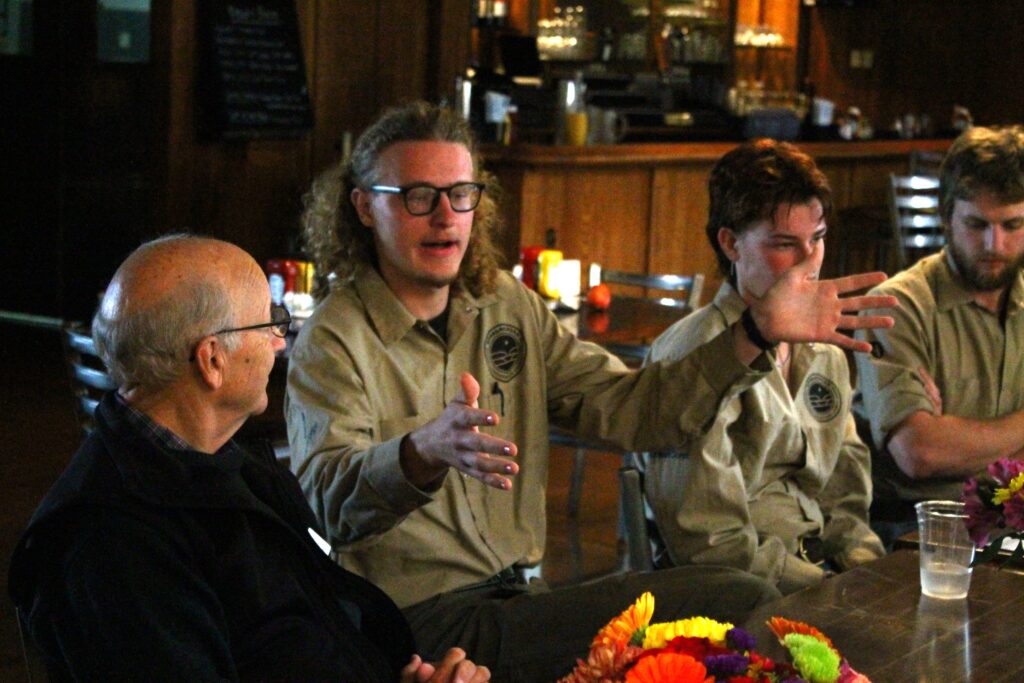
Paavo explains some of his favorite aspects of the job.
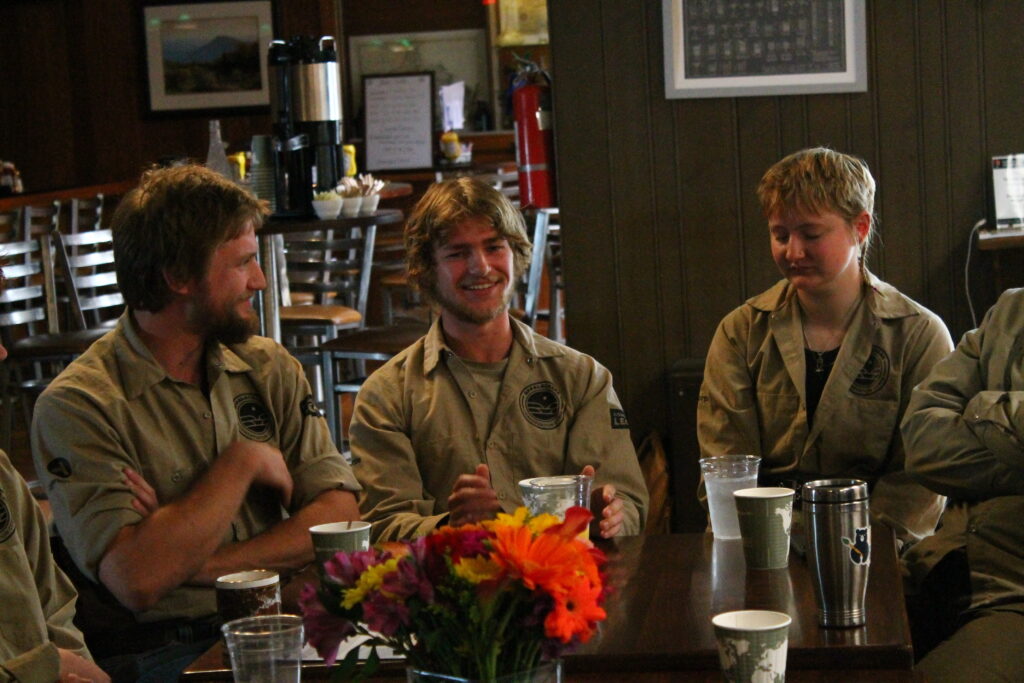
Aaron, Max, and Gray introduce themselves.
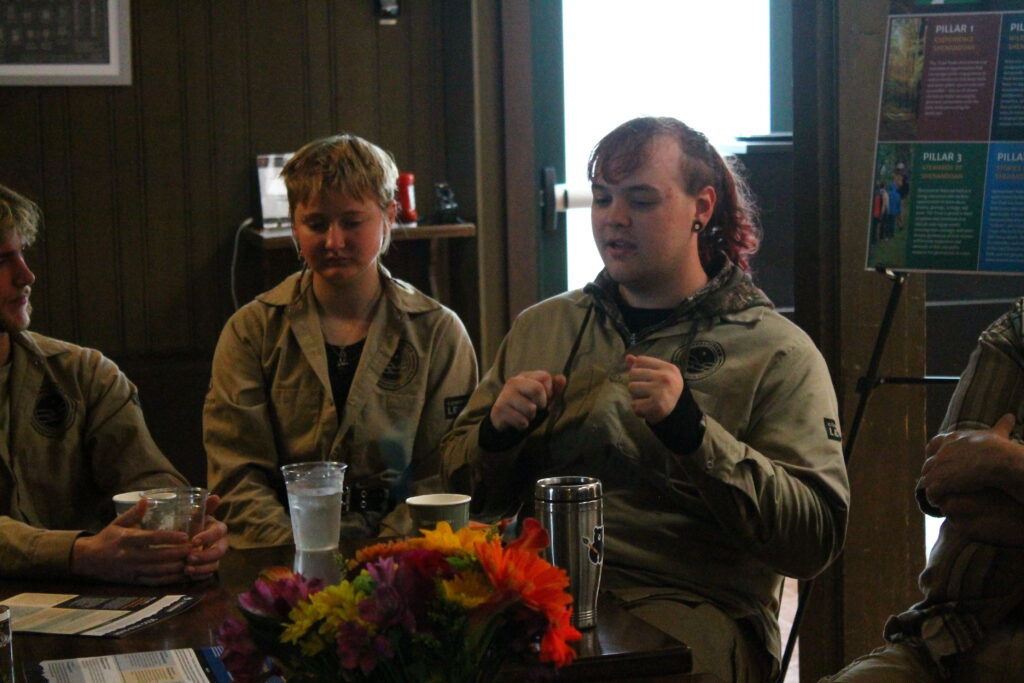
Sasha talks about their experience with ACC.
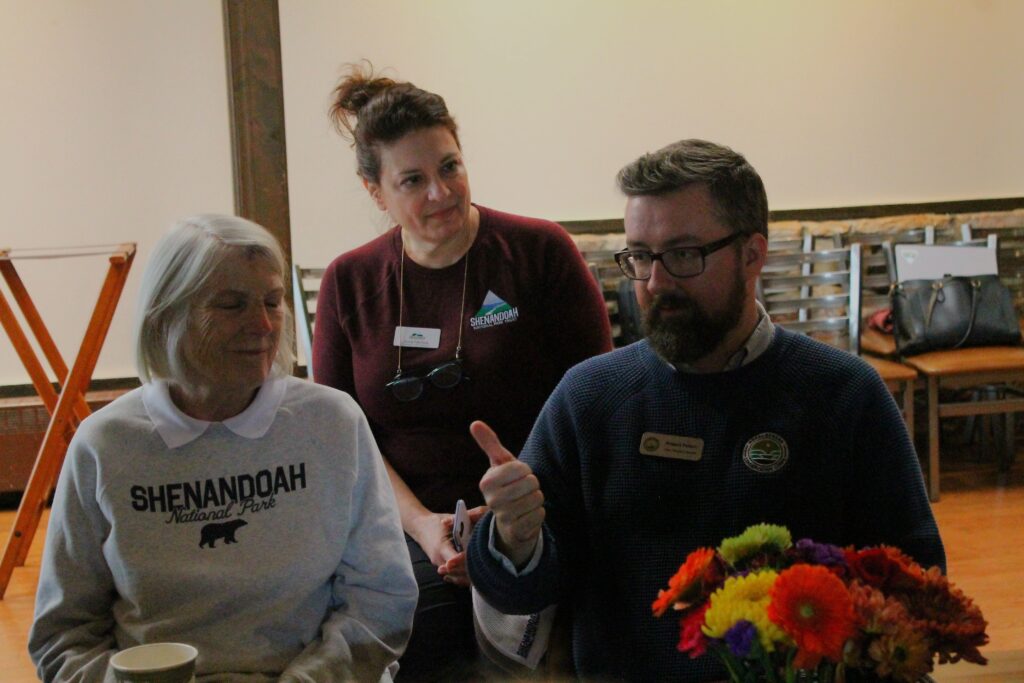
Robbie explains how ACC functions within the larger Conservation Legacy program. Cathy and Anna look on.
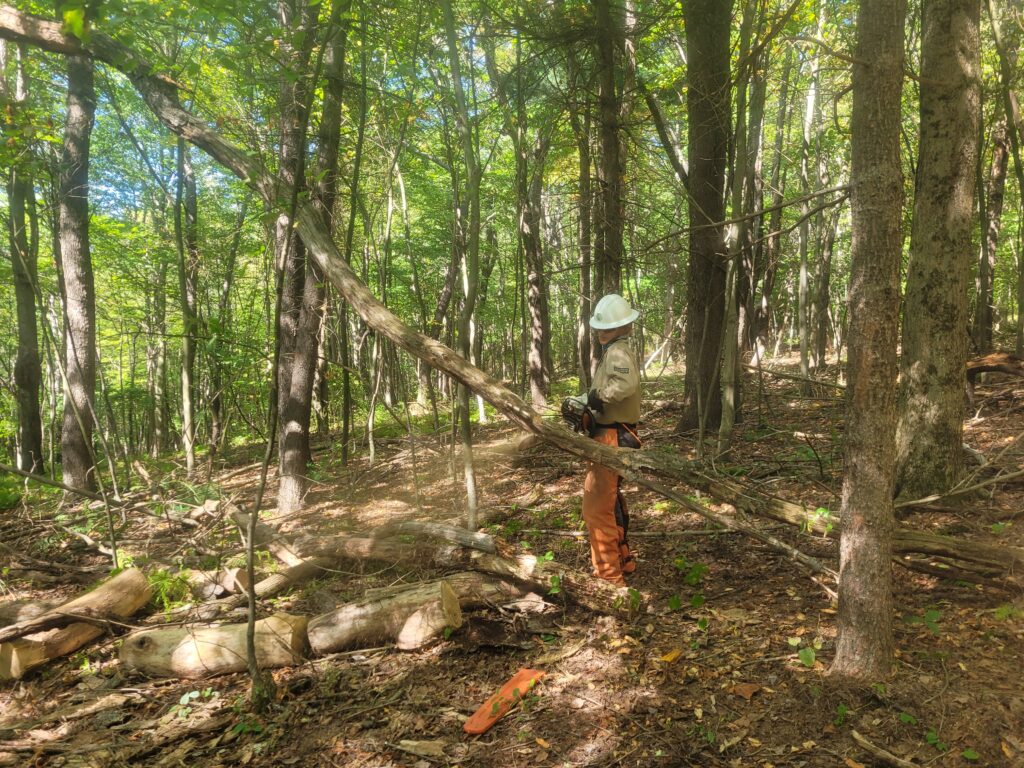
The Saw Crew at work.
Anna: That’s great. Robbie, could you explain what Sasha meant by Conservation Legacy?
Robbie: Yes. Appalachian Conservation Corps is a program under Conservation Legacy, a national organization based out of Durango, Colorado. It works like a federated model. Conservation Legacy is the central office, and there are different programs across the country. We have ACC here in the Valley, Conservation Corps North Carolina in Raleigh, Southeast Conservation Corps based in Chattanooga, Tennessee, and the Environmental Stewards Program, which focuses on interns and is based in Beckley, West Virginia. Out west, we have Stewards West, Southwest Conservation Corps with offices in Durango and Los Valles, Arizona Conservation Corps based in Tucson and Flagstaff, and an Ancestral Lands Program with offices in areas related to Southwestern Native American tribes.
Anna: The Trust has partnered with ACC for many years, supporting youth corps and workforce development efforts. Ember, do you want to add anything?
Ember: I mean, it’s how I got my job!
Anna: We’ll circle back to that, but I want to hear more about what the current project is like, the training you received, and the hands-on work you’re doing now.
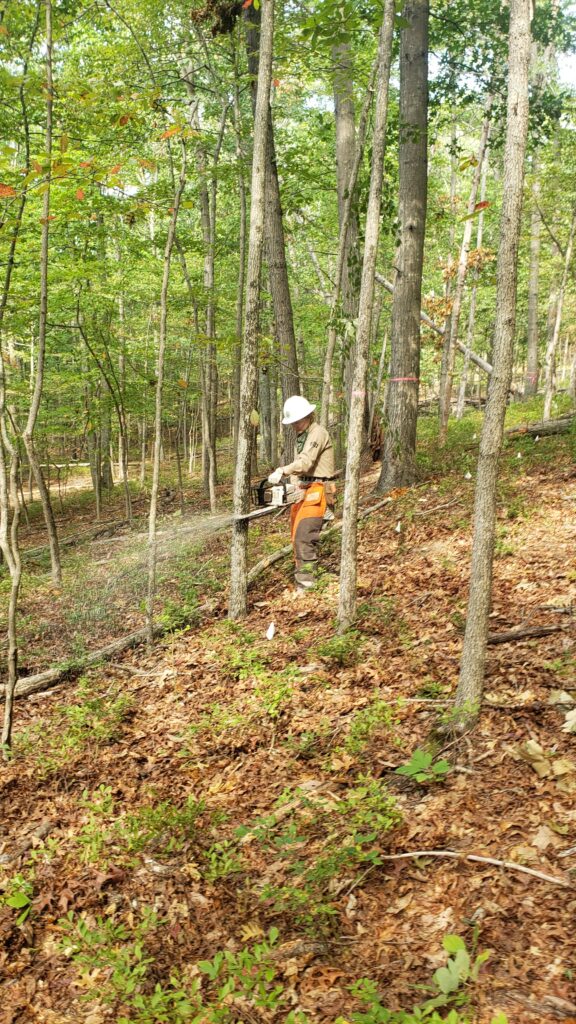
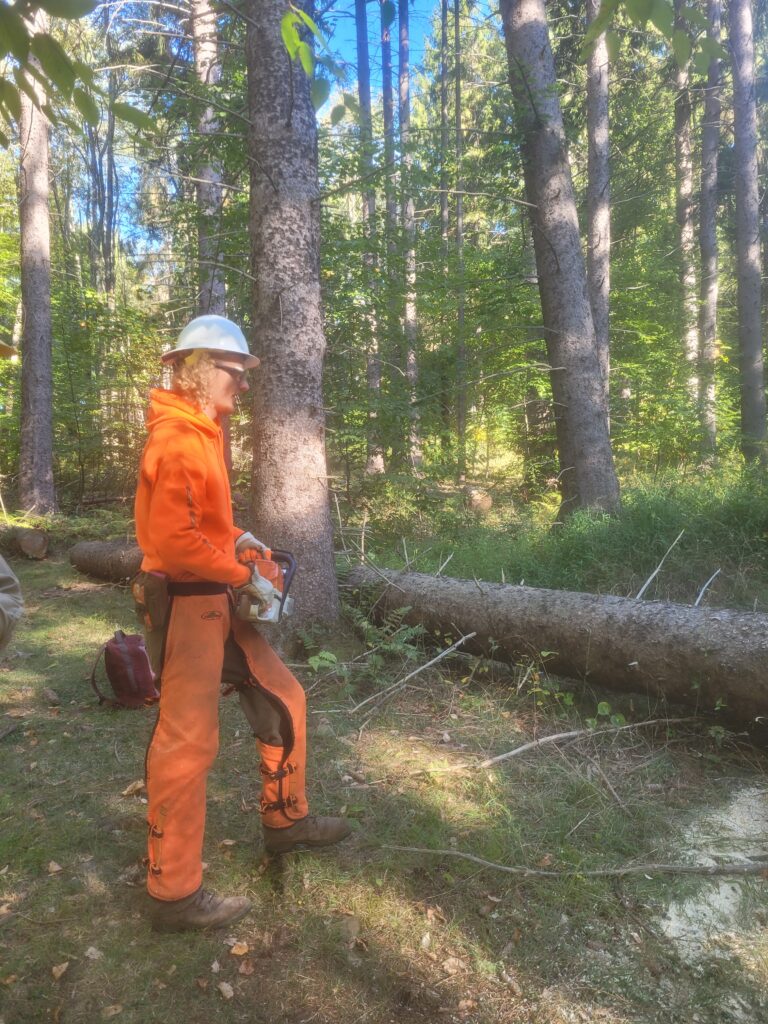
Max: For training, we had a nine-day period where we went up to Western Slopes and learned how to use chainsaws, practiced felling and bucking, and all that. Working on the overlooks is so much fun. You might think clearing an overlook is just cutting the first 20 to 50 feet, but it’s an entire acre down the overlook. We usually split into groups of three, start on either side, make tunnels into the overlook, meet in the middle, then split off and make side tunnels. It’s challenging but fun.
Rick: What do you remove?
Max: We usually leave pines, witch hazel, and fruit trees like dogwoods. The park gave us a list of trees to keep. Gray is good at identifying witch hazel, and apple trees are easy to spot. Pines are pretty straightforward too.
Anella: We start by cutting the tree at about waist height, then remove it from the stump and cut the stump as close to the ground as we can without hitting dirt or rocks. We usually leave one or two inches of stump.
Rick: What do you do with the debris?
Anella: We toss it downhill to clear the way. We’re usually working from the bottom up, so we need to get it out of our path.
Rick: Who’s been cleaning the old walls? Is that you?
Robbie: At least some of the walls are cleaned by the Women in Historic Trades and Preservation crew funded by the National Park Foundation. They work with masons to repoint and repair the walls, usually in the northern areas of the park. Additionally, there’s a general maintenance schedule for the walls, like with the overlooks and trails, to ensure they are maintained and cleaned as needed.
Rick: What do you like best and least about the work?
Paavo: Being up on the mountain and looking out at the views all day is the best part. Running the chainsaw is fun but requires a lot of attention. The least favorite part is probably the weather. Living in a tent can be tough, especially when it’s windy or rainy.
Anella: My favorite part is the lifestyle. Living with the crew, we get to know each other really well. Each hitch is nine days, so we spend a lot of time together. I love working with my hands, which I didn’t do much before. The hardest part is when the footing is rough, and it feels like progress is slow. But overall, it’s worth it.
Aaron: I like being outdoors for nine days at a time. I get antsy sitting inside, so this job suits me. The rain can be annoying when it doesn’t let up, but it’s still fun in its own way.
Max: I also love using the chainsaw. We make big tunnels through the overlooks, then split off to make our own. You might catch a glimpse of a crewmate and wave since you can’t hear over the saws. It’s fun. The challenging part is dealing with invasive plants like bittersweet that get tangled in the canopy. You have to cut carefully to bring them all down at once.
Anna: I learned about tree canopies and their importance for habitat protection in this job. It’s not just about making the overlooks pretty; you’re protecting the ecosystem. Gray, what’s your take?
Gray: I love seeing untouched ecosystems. Last season, we worked in areas without trails, places where no one had walked for 50 years. I find old bottles, like 50- or 60-year-old Coke bottles, and I’m making a small collection. Seeing native plants thrive is amazing. I’ve never seen witch hazel so tall. There are challenges like falling and getting scrapes, but it makes me stronger, and the overlook too.
Anna: You just gave us a metaphor for life. Was that intentional?
Gray: I do that sometimes.
Sasha: I’m going to start with my least favorite part. The work is tough and dangerous. We run heavy equipment on 45-degree slopes with thick overgrowth. It’s hard when you’ve fallen five times since lunch and nearly landed on your saw. But then, I look out at the view and remember why I do this. I’ve never wanted to work in an office. This job fulfills that childhood dream. We have a lot of safety training, so when I start to lose balance, I engage the chainsaw brake, let myself fall slowly, and get back up.
Anna: I love how each of your descriptions adds something unique.
Rick: You all seem very bonded. Will you stay in touch after this?
Paavo: We’re together for this three-month season until November. We hang out even on our five days off. Some of us didn’t know each other before this, but we’re close now.
Anella: It’s hard to stay in touch after a season ends, but I always tell my crew that if they called, I’d pick up.
Sasha: I stay in touch with some past crew members. It’s a great environment for forming lasting friendships.
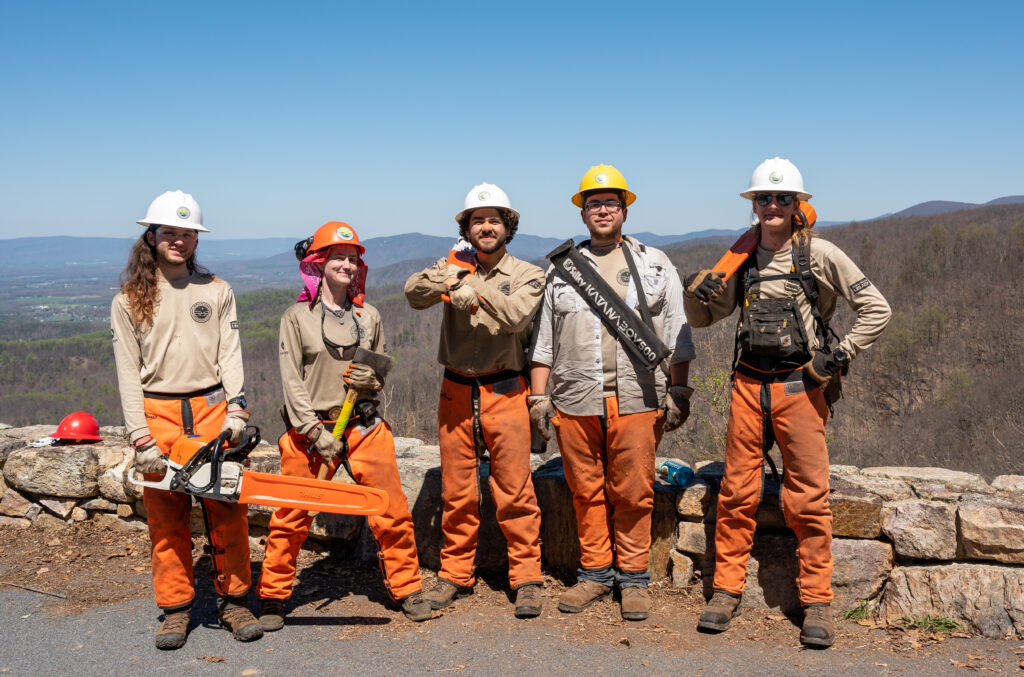
Anna: What has this experience meant for your career path?
Paavo: My career path has been all over the place. I got into conservation through Boy Scouts and worked at a summer camp for five years. I wasn’t sure what I wanted to do but knew I didn’t want an office job. This job has been great, and I might go back to college for a degree in forestry.
Anella: I’ve done seasonal jobs and started working in the outdoor industry at a canoe outfitter in Minnesota. ACC taught me more hands-on skills. I’m considering becoming an arborist or finding tree service jobs for a more regular schedule.
Aaron: I grew up working on farms and hunting, which gave me a love for the outdoors. Before this, I was a diesel mechanic and worked at a boatyard. I want to stay in trail and park maintenance.
Max: I grew up near the suburbs but caught the outdoor bug through Boy Scouts. I think you owe it to yourself to do what you love when you’re young. I want to work out West one day.
Gray: I grew up with a mom who was very into conservation and art. I started in retail plant care and then worked at a nursery, where I developed a passion for native plants and rewilding. ACC gave me a chance to apply that passion. I might go back to school to study more.
Sasha: I was active in Boy Scouts and loved camping but didn’t let it guide my career initially. I started in emergency medicine but hated it, dropped out, and worked as an EMT. I realized I needed to be outside, so I went back to school for environmental studies and joined ACC. I’d like to work for the National Park Service or in resource management. Not knowing what comes next is scary but exciting.
Anna: Thank you all for sharing your stories. It’s inspiring to hear how this work has impacted your lives. You’re shaping the future of conservation and leaving a lasting impact on Shenandoah and beyond.
